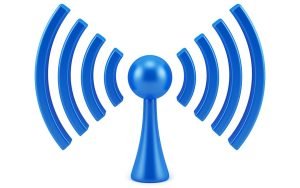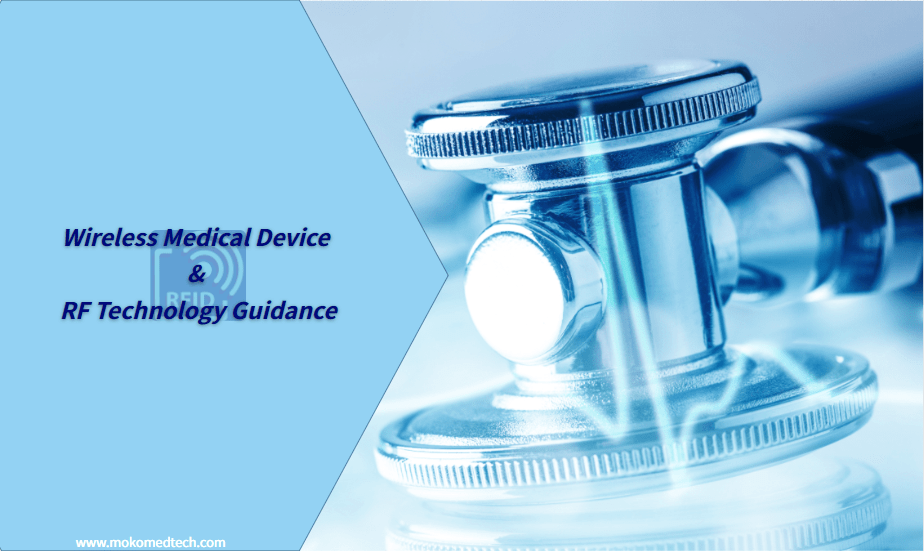In recent years, with the development and progress of RF wireless technology, the application of RF wireless technology in various fields has become increasingly popular. Wireless medical device is one of the examples. However, withe the popularity of this technology, the wireless environment is becoming increasingly complex and crowded. For wireless medical devices, it is particularly important to pay attention to the problems that RF wireless technology may face. RF wireless technology may have an impact on the safety and effectiveness of medical devices.

The FDA’s guidance on RF wireless technology in medical devices discusses various concerns that may have an impact on the safety and effectiveness of medical devices. These concerns include: 1. The selection and performance of wireless technology; 2. Wireless quality of service; 3. Wireless coexistence; 4. 4.Wireless signal and data security; 5. Electromagnetic compatibility (EMC) of wireless technology; 6. Information on proper setup and operation; 7. Maintenance notes. This article will explain the concerns in the guide.
I. RF Wireless Technology Used in Wireless Medical Device
RF wireless technologies used in medical devices include: Wireless Medical Telemetry Service (WMTS), Medical Device Radiocommunication Service (MedRadio) (including Medical Implant Communication Service (MICS)), Medical Micro-power Network (MMN), Medical Body Area Network (MBAN), Cellular Communication Chipset, and Radio Frequency Identification (RFID) products.

When using such RF wireless technologies, manufacturers need to provide certification and/or licenses from relevant agencies. For example, the Federal Communications Commission (FCC), the Ministry of Industry and Information Technology (MIIT) of China for radio management.
II. The design, Testing and Use of RF Wireless Medical Device
RF wireless medical device should consider the impact of the introduction of RF wireless technology on the safety and effectiveness of the medical device[1] itself. It also needs to be fully evaluated for its ability to function properly in an environment where other RF wireless products are expected to be present. Whether it’s a wired or wireless medical device, correct, timely and secure transmission of medical data and information is critical. This is especially for medical devices that need to perform critical functions such as life support or life maintenance. Therefore, manufactures should carefully consider which device functions can be connected wirelessly and which device should be connected wired.
Known safety issues involving RF wireless technology should be addressed in advance during the design and development of medical devices. During the design and development, risk mitigation measures should be taken for relevant security issues identified. This is in order to ensure that the risk is at an overall acceptable level. Electromagnetic disturbances may affect medical devices. Therefore, when the design of wireless medical devices is confirmed, it must include a risk analysis of the RF wireless communication and control functions.
1. The selection and performance of wireless technology
When selecting wireless technology, it is important to fully understand the function and intended purpose of the wireless medical device. The function and intended purpose of the medical device should match the capabilities and expected performance of the wireless technology. In addition, issues related to the integrity of wirelessly transmitted data, and requirements related to device security should be considered. These issues include detection, latency and throughput, correction, and damage control and/or prevention.
In selecting the RF wireless technology and operation frequency, the performance and technical requirements of the device should be considered. For example, whether the selected band needs to be licensed. If the device operates in a non-licensed band, it is not entitled to interference protection. In many situations, RF wireless medical device can minimize the effects of interference that can lead to incorrect or corrupted data with the help of correction protocols and frequency hopping protocols. In addition, the guidelines recommend that manufactures limit the RF output of their device to the lowest power level. And will reliably perform the intended function to minimize interference with other medical devices.
The choice of wireless technology should take following factors into account: Global frequency band allocation and international compatibility, primary or secondary radio service classification, possible interference from users of the selected band and adjacent bands, interference mitigation techniques for shared bands. Implantable and wearable medical devices should also consider the propagation characteristics of RF in human tissue and the corresponding specific absorption rate.
2. Wireless Quality of Service
Wireless Quality of Service (WQoS), i.e. the level of performance and service necessary to satisfy the wireless functions of medical devices. While the quality of service of cell phone networks is acceptable for voice communications, it may not meet the requirements of certain medical functions. Loss of connection without warning, inability to establish a connection, or degradation of service can have serious consequences, especially if the medical device relies heavily on wireless connectivity. If the wireless medical device is part of the network, the wireless quality of service should be carefully considered in the context of the intended purpose of the medical device.
3. Wireless Coexistence
A key factor affecting the performance of wireless medical device is the limited RF spectrum available. This can lead to potential competition among wireless technologies that simultaneously use the same spectrum. Also, it will potentially result in loss or delay of medical device signal. These risks include: expected sources of electromagnetic interference related to a particular known usage environment, interference of co-channel and adjacent frequency from medical devices and other RF band users.
If RF wireless medical devices are expected to be used in the same or close proximity to RF sources, such risks should be solved through coexistence testing of device wireless systems. In addition, we should consider the risks of running multiple medical devices in the same immediate area. Once we identified the failure mode and associated risks, we should make a reasonable statement of acceptable risk, conduct tests, and take other measures that can demonstrate appropriate risk mitigation.
4. Wireless signal and data security
The security of RF wireless technology is to prevent unauthorized wireless access to hospital networks or patient data. It also ensure that the information and data received by a particular device will be used exclusively for that device. Authentication and wireless encryption play a critical role in an effective security solution for wireless technology. Though there are encryption schemes available for most wireless technologies, it may be necessary to enable wireless encryption and evaluate its adequacy for the intended use of the medical device. In addition, security measures should be well coordinated between medical device components, accessories and systems, and with the host wireless network as needed. Also we should consider the automatic connection of certain wireless technologies (such as discoverable modes of Bluetooth) may allow medical devices to be accidentally remote controlled.

(photo via. Vecteezy)
5. Electromagnetic Compatibility (EMC)
The guidelines recommend that EMC be an integral part of design, development, testing and performance of RF wireless medical devices. This includes consideration of the possibility that RF emission from the device man interfere with other equipment. In addition, RF wireless technology (alone and in conjunction with medical devices) is required to meet the applicable FCC requirements.
6. Information on proper setup and operation
To ensure proper setup, configuration, and performance of wireless medical device, appropriate information should be provided to the user. For example, the type of RF wireless technology, modulation characteristics and effective RF transmit power; specifications for each RF or transmitting band and preferred frequency or band (if applicable), and specifications for the bandwidth of the receiving segment of the device or system in the above frequency band; the functionality and performance of wireless data transmission including data throughput, latency and data integrity; information related to anti-electromagnetic interference, etc.
7. Maintenance Notes of RF wireless medical device
The manufacturer shall continuously manage the risks associated with the use of the above wireless technologies throughout the life cycle of the device. Procedures for corrective and preventive measures for risks must include an analysis of possible trends in nonconformity information and complaints. Take failure reports as an example, it may include erratic or unintended behavior of medical devices.
In addition, the integrity of the RF wireless function needs to be maintained when repairing active medical devices. As well as retaining the design elements used to ensure EMC appropriate functionality.
Conclusion
Today, many medical devices rely on wireless technology for at least one function in their medical role. For example, in telemedicine, wireless devices can monitor patients in real time from a distance. Data will be transmitted directly to medical personnel via portable or implantable medical devices. However, applications built into wireless devices are not subject to strict medical device regulations.
It is the FDA’s responsibility to ensure that such wireless medical devices are properly tested prior to marketing and to assist industry in developing a range of innovative, safe, and effective wireless medical devices. Designers and manufacturers of wireless medical devices must also first consider whether their devices will work properly in their intended use environment. Potential limitations of wireless connectivity also need to be tested to prevent failures that could harm patients. The release of the guidance will help capture the delicate balance between innovation and safety and effectiveness. Reducing healthcare costs and improving quality, bringing benefits to both patients and providers.
[1] About the safety and effectiveness of medical devices — Why is medical device safety is so important?












